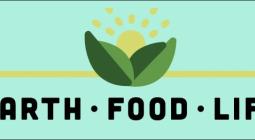With drought-hardy cows, Botswana prioritises adaptation in new climate plan
Cover photo: The dry, sparsely-populated southern African nation is focusing its funding on ways to combat extreme weather rather than cutting already-low emissions
Botswana’s new climate plan focuses on adapting to drought, floods and cyclones over cutting planet-heating gases, in a move praised by African climate negotiators as a model that low-emitting vulnerable countries should follow.
The government plan – or nationally determined contribution (NDC) – submitted to the UN on Christmas Eve, does not significantly strengthen a 2030 emissions-cutting goal from an earlier version, but adds specific targets to promote adaptation measures like rooftop water storage tanks and drought-tolerant crops and cows.
As part of the 2015 Paris climate agreement, all countries are supposed to submit stronger NDCs every five years. While a handful have done so already in the latest round, most of the 194 signatories to the accord will put forward their third plan this year. Having failed to submit an updated plan like most nations did around 2020, Botswana’s new NDC is only its second.
Its government said in the document that “as Botswana is one of the lowest emitters of [greenhouse gases] in the world, the limited financial resources available will be prioritised for adaptation to reduce the country’s vulnerability to the impacts of climate change”.
The southern African country plans to spend $2.1 billion on adapting and $0.9 billion on cutting emissions by 2030. If it gets foreign funding and support, it says it will spend an extra $0.4 billion on adaptation and $2.7 billion more on mitigation through things like solar power and biogas plants.
Fatuma Hussein, a Kenyan climate negotiator for the African Group, which represents the continent at UN climate talks, said Botswana’s approach is “laudable” and reflects the “unique circumstances and challenges faced by many African countries” which emit very low levels of greenhouse gases but face extreme climate impacts.
“For a country with minimal global emissions, this focus makes sense,” Hussein said, although she added that African countries should not neglect measures to curb emissions as projects like renewable energy and sustainable agriculture can make them more resilient to climate warming as well as slowing it down.
Julius Mbatia, a fellow Kenyan negotiator, said priorities for vulnerable developing countries must reflect “their lived circumstances” in the world of climate cooperation “where their voice is barely heard” nor their asks for climate finance for a just and resilient transition “accorded due seriousness”.
Tipping point
Botswana’s plan, developed by the meteorological services department with support from the United Nations, warns that “based on the harsh semi-arid environment, acute water scarcity and fragile ecosystems, Botswana is already at a tipping point”.
“Climate change could be the defining parameter to tip the scale to irreversible disastrous points for the country and its people,” it adds.
In particular, it reports annual heatwaves, severe droughts, flooding from tropical cyclones coming off the Indian Ocean and winter cold fronts, and destructive hailstorms. The plan includes over 50 numerical targets on how to adapt to these threats.
To tackle drought, the government aims to connect all feasible settlements to water pipelines, encourage desalination plants, reduce water waste and triple the percentage of public buildings with water storage tanks.
It also aims to reduce the livestock mortality rate from 25% to 10%. One way it plans to do this is by encouraging the Mosi breed of cow, which can survive with less food and water.
The country has been importing more cattle that are better able to withstand drought and disease from Texas and breeding them with local cattle using artificial insemination in a UN-backed programme.
Similarly, Botswana plans to distribute drought-tolerant seeds to half of its smallholder farmers and three-quarters of commercial farmers.
Warnings and maintenance
So that it can warn people about storms and floods, the government plans to expand the number of automated weather stations on its soil from 19 to 600, and produce seasonal weather forecasts for all districts.
It also aims to keep all drainage systems and government infrastructure well-maintained, and ensure that all new buildings are “climate smart” and use “climate-proof materials”.
The plan maintains the country’s target, set in its first NDC in 2016, to cut emissions by 15% by 2030 compared with a business-as-usual projection.
To help achieve this, it sets new targets – not included in the previous five-page NDC – for specific emissions-reduction measures. These include replacing 2 million incandescent lightbulbs with more energy-efficient LED bulbs and installing 20,000 solar water pumps.
Global goal on adaptation
Over the next year, every government signed up to the Paris Agreement is supposed to produce a more ambitious NDC climate plan with a 2035 target to reduce emissions. Hussein said she also expects Botswana to submit another NDC.
Of the handful of mainly larger nations – including climate summit hosts Brazil and the United Arab Emirates – to have released their plan so far, none have set numerical adaptation targets like Botswana does.
At November’s COP30 climate conference in Brazil, nations are due to agree on indicators to measure progress under a “Global Goal on Adaptation”. National targets put forward by developing countries are feeding into this process and are likely to continue to do so.
Commenting on the UN climate talks, Mbatia of Kenya said more work is needed to define effective ways to measure adaptation.
“The world must now discuss methodologies and practices of determining the adequacy of adaptation targets set and assessing progress in implementing adaptation actions,” he added.
Cover photo: Farmers look at their crops near Kopong, Botswana, in 2009 (Picture: Sarah Elsewhere/Flickr)



